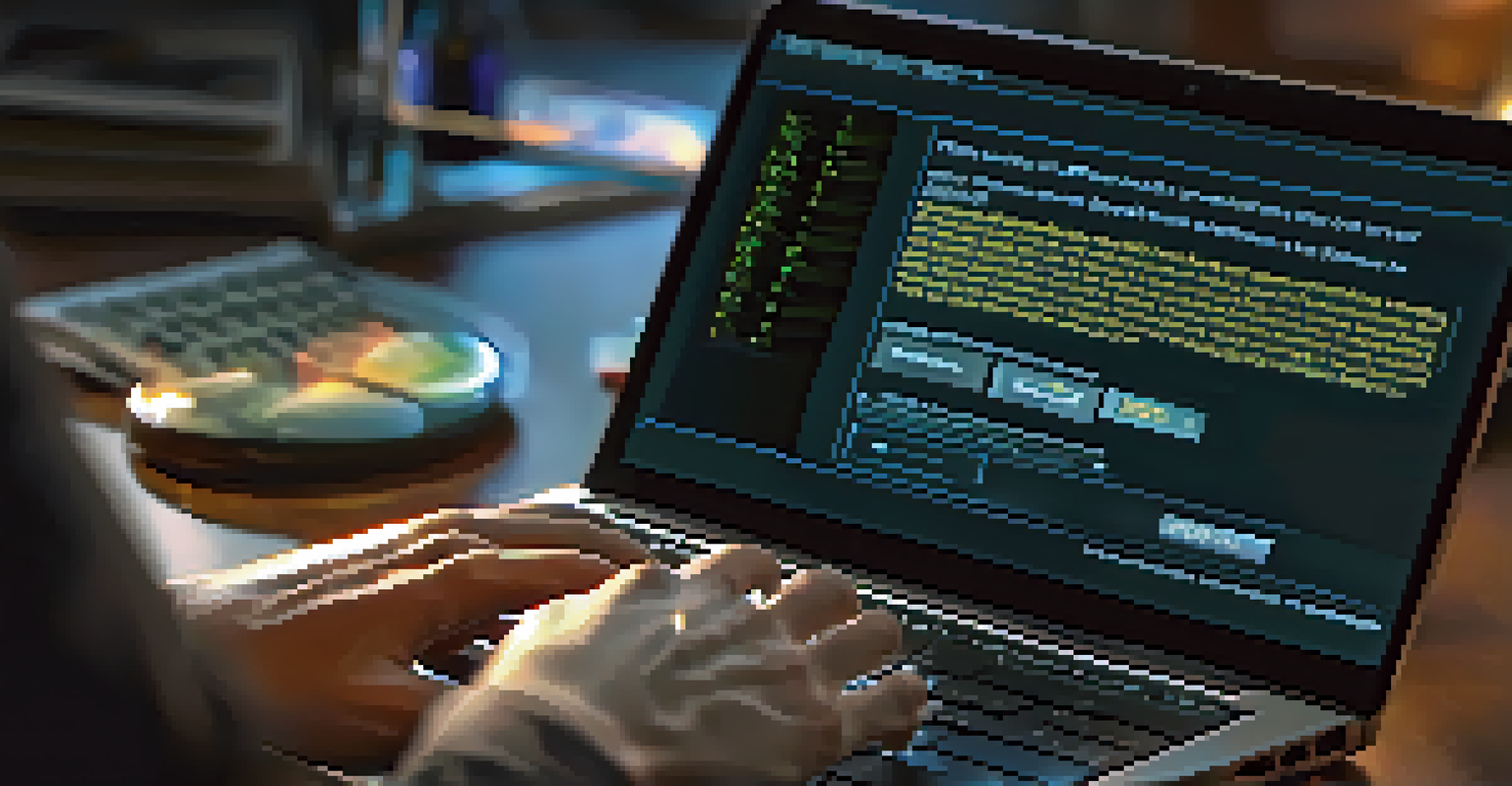Understanding Cybersecurity: Protecting Your Digital Life

What is Cybersecurity and Why It Matters
Cybersecurity refers to the practice of protecting systems, networks, and data from digital attacks. In our increasingly digital world, where personal and sensitive information is often stored online, understanding cybersecurity is crucial. Just as you lock your doors at night, cybersecurity helps safeguard your digital assets from cybercriminals.
Cybersecurity is much more than a matter of IT. It's a matter of national security, but it’s also a matter of personal security.
The importance of cybersecurity can’t be overstated; breaches can lead to identity theft, financial loss, and even damage to your reputation. Imagine finding out that your bank account has been drained or that someone is using your name to open credit cards. These scenarios are all too real, and they underline the critical need for robust cybersecurity measures.
Moreover, with the rise of remote work and online transactions, the threat landscape has evolved, making it necessary for individuals and businesses alike to stay informed and proactive. By understanding cybersecurity, you are not just protecting yourself; you are contributing to a safer online community.
Common Cyber Threats You Should Know
Cyber threats come in various forms, each with its unique methods and impacts. Some of the most common threats include viruses, phishing attacks, and ransomware. For instance, a phishing attack often involves an email that seems legitimate, tricking you into revealing personal information by clicking on a malicious link.

Ransomware is another alarming threat, where hackers encrypt your files and demand payment for their release. Picture receiving a message that says you can’t access your cherished family photos unless you pay up. This is not just a plot from a movie; it’s a nightmare that many have faced.
Understanding Cybersecurity Basics
Cybersecurity is essential for protecting personal and sensitive information from digital attacks in our increasingly online world.
Understanding these threats is the first step in protecting yourself. By being aware of the tactics used by cybercriminals, you can better recognize potential dangers and take necessary precautions to avoid falling victim.
Best Practices for Strong Passwords
Creating strong passwords is one of the simplest yet most effective ways to enhance your cybersecurity. A strong password typically includes a mix of uppercase and lowercase letters, numbers, and special characters. Think of it as a key to your house; the more complex the key, the harder it is for someone to pick the lock.
The best way to predict the future is to invent it.
Avoid using easily guessable information like birthdays or common words. Instead, consider using a passphrase—a series of random words strung together. For example, 'BlueSky!CoffeeCup$2023' is much harder to crack than 'password123'.
Additionally, it's crucial to change your passwords regularly and never use the same password across multiple sites. If one site gets compromised, having unique passwords can help protect your other accounts from being accessed.
Two-Factor Authentication: An Extra Layer of Security
Two-factor authentication (2FA) adds an extra layer of security to your online accounts. It requires not only your password but also a second form of verification, such as a text message code or an app-generated token. Think of it as needing both a key and a fingerprint to unlock your door.
Enabling 2FA can significantly reduce the risk of unauthorized access, even if someone manages to get hold of your password. For example, if a hacker tried to log into your account, they would also need that second factor, making it much harder for them to gain access.
Recognizing Common Cyber Threats
Awareness of threats like phishing and ransomware is vital for individuals and businesses to effectively safeguard their data.
Many platforms now offer 2FA, and taking advantage of this feature is a smart move. It’s a simple step that can provide peace of mind and enhance your overall cybersecurity.
Keeping Your Software Up-to-Date
Regularly updating your software is a key aspect of maintaining cybersecurity. Software updates often include patches for security vulnerabilities that hackers exploit. Skipping these updates is like leaving a window open in your house—inviting trouble.
Most devices and applications have automatic update options, making it easier to stay current. However, it’s also important to check for updates manually, especially for critical software like operating systems and antivirus programs.
By keeping your software updated, you’re taking proactive steps to defend against new threats as they emerge. This simple habit can go a long way in protecting your digital life.
Recognizing and Avoiding Phishing Scams
Phishing scams are among the most prevalent cybersecurity threats, and they often rely on tricking you into revealing personal information. These scams can come in the form of emails, text messages, or even phone calls that appear legitimate. It’s like receiving a fake letter from your bank asking for your account details.
To protect yourself, always scrutinize the sender’s email address and look for signs of poor grammar or unusual requests. If something feels off, it’s better to verify by contacting the company directly rather than clicking on any links provided.
Importance of Strong Passwords
Creating complex, unique passwords and enabling two-factor authentication significantly enhances your online security.
Being vigilant and educated about phishing tactics is crucial in today’s digital landscape. By recognizing these scams, you can avoid falling victim and keep your information secure.
Safe Browsing Practices for a Secure Online Experience
Safe browsing practices are essential for protecting your digital life. Always ensure that the websites you visit use HTTPS, which means they are secured with encryption. This is especially important when entering sensitive information like credit card numbers or personal details.
Additionally, be cautious when clicking on links or downloading files from unknown sources. Just like you wouldn’t accept a drink from a stranger at a party, it’s wise to be wary of unsolicited downloads and links.

Using reputable antivirus software and browser extensions can also help safeguard your online activities. These tools can alert you to potential threats, making your browsing experience safer and more secure.